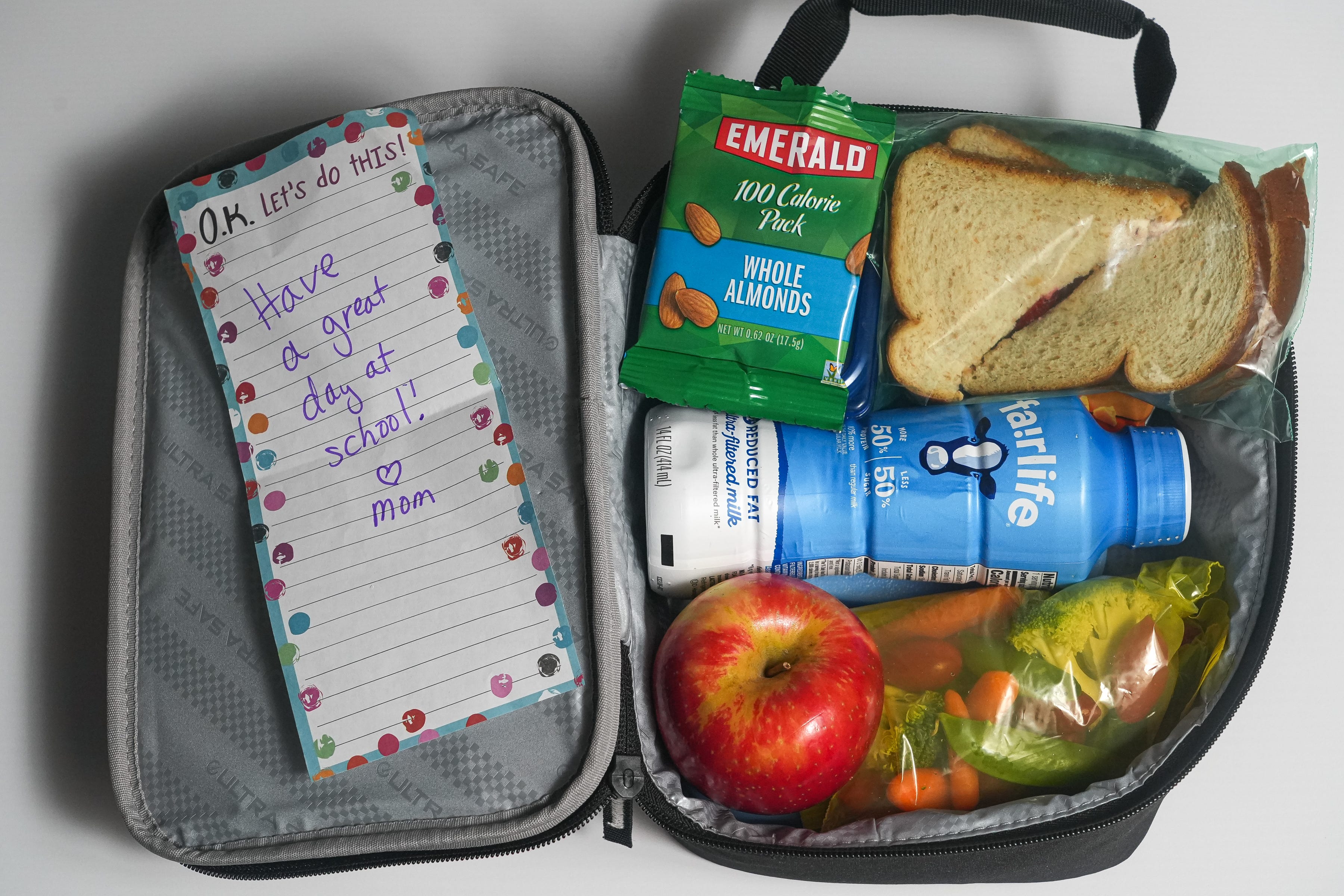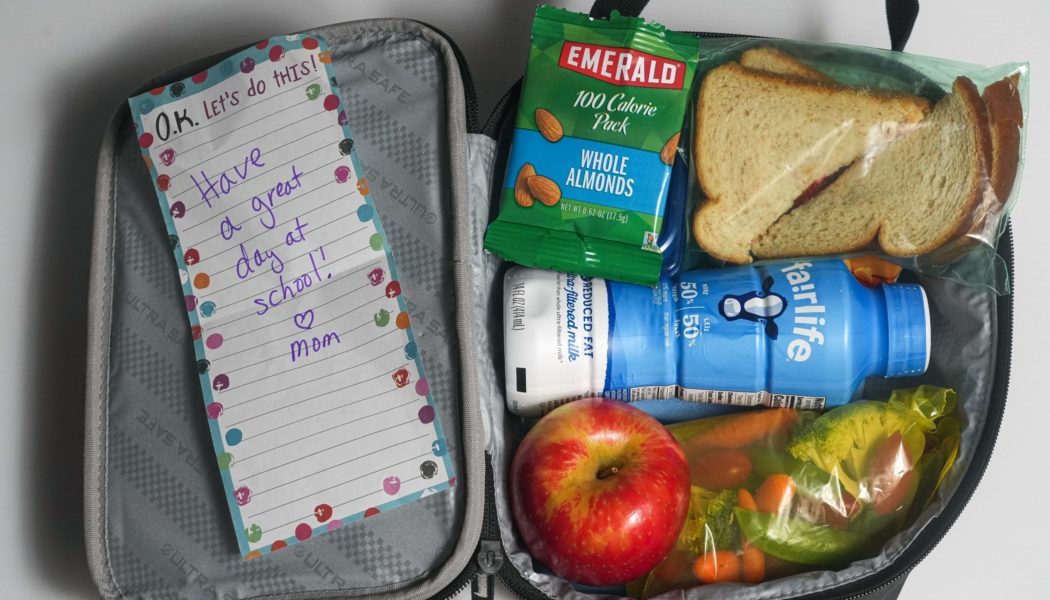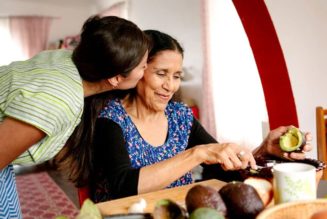
It’s back to school time. So what should be part of a healthy school lunch?
Dr. Deanna Hoelscher, a registered dietitian and a professor and director of the Michael & Susan Dell Center for Healthy Living at UTHealth Houston School of Public Health, gave the Statesman some tips.
What should go in a packed lunch?
Think food groups.
- Protein: Lean meat such as chicken, turkey; fish, eggs, beans, nuts or nut butters (if your school allows them).
- Whole grains: whole wheat breads, tortillas or crackers, whole wheat pasta, brown rice.
- Fruit: Whole fruit, cut up fruit, canned fruit packed in juice or water without sugar, applesauce without sugar
- Vegetables: whole or cut up.
- Dairy: Low or nonfat milk, part-skim string cheese, nonfat or low-fat yogurt (monitor sugar content).
- A drink: Low-fat milk, water, sparkling water. Avoid juices because of the sugar content.
What should not go into a packed lunch?
- Avoid processed foods. Kids tend to eat packaged snacks before they eat foods with high nutritional value.
- Watch for high sodium foods. Read the back of the lunch meat package. Sodium increases blood pressure, and once you get used to high sodium foods, you want more high sodium foods, Hoelscher said. Kids should only be getting between 1,000 to 1,500 milligrams of sodium a day depending on their age. The American Heart Association found that most kids were eating 3,100 miligrams a day. Sodium was coming from pizzas; hamburgers, hotdogs; soups; breads; lunch meats; chips and pretzels; as well as natural sodium in dairy products. Hoelscher would like parents to save chips for a special occasion, not the everyday lunch. For the crunch, go for vegetables like sugar snap peas, carrots or jicama.
- Check foods for added sugars. Buy instead fruit, like strawberries, as your sweet treat at the end of the meal.
Keeping kids health: Medications & surgery: What do new children’s obesity guidelines mean for Austin families?
How can I make lunch fun?
Lunch doesn’t have to be a boring sandwich.
- Consider leftovers: Beginning in middle school, many school cafeterias have microwaves. Even if kids don’t have access to the microwave, some leftovers can be just as tasty cold.
- Wrap, roll and stuff foods: Think tortillas with meat, lettuce, beans and a sprinkle of cheese. Stuff whole wheat pitas with sandwich fixings, beans, rice. Create pinwheels veggies, meat or cheese in a tortilla and then sliced as finger foods.
- You dip, we dip: Jazz up vegetables with a yogurt ranch dip, guacamole, hummus. Add protein to fruit with a spoonful of peanut butter.
- Learn what healthy foods other kids are eating: Kids that don’t like strawberries, might eat strawberries if their friends are eating them.
- Remember the 80-20 rule: Focus on healthy foods 80% of the time; the other 20% of the time, offer a treat or pack something like pizza.
- Have kids pack it themselves: Kids who are involved in packing their lunch, learn about healthy eating and they are more likely to eat it. “It gives them some agency,” Hoelschler said.
Remember the nonfood items
- Ice packs: Pack at least an icepack below and one above the food before zipping up the lunch bag. If kids do have access to a refrigerator, open up those insulated bags in the fridge to make sure the cool air of the fridge can reach the lunch contents.
- A note: This is an excellent time to remind kids you love them, send encouraging words or that they have dance or piano lessons after school.
- Napkins and utensils: Kids might pass on food that requires a spoon or a fork if they don’t have it in there.
What’s for breakfast?
Many schools now offer free breakfast, but if yours doesn’t, here are some things to consider:
- Yogurt with fruit and a little granola: Watch the sugar in the granola and the yogurt.
- Overnight oats: Mix oatmeal with water or milk, fruit and nuts and leave it overnight.
- Whole wheat toast with a nut butter and fruit on top: Use a tortilla instead of toast if you like.
- Frozen waffles or pancakes: Use a nut butter for protein and fruit on top instead of syrup.
- Cereal: Add fruit to it, and milk, soy milk for protein. Ensure cereal has less than 5 grams of added sugar and has at least 2 grams of fiber.
Healthy eating: Put down the coconut oil, red wine in new heart health dietary guidelines








